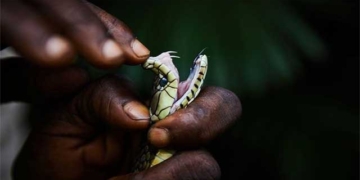The Parasitology Museum at the Central Institute of Malariology, Parasitology, and Entomology is the only place in Vietnam showcasing hundreds of terrifying parasitic specimens that affect humans.
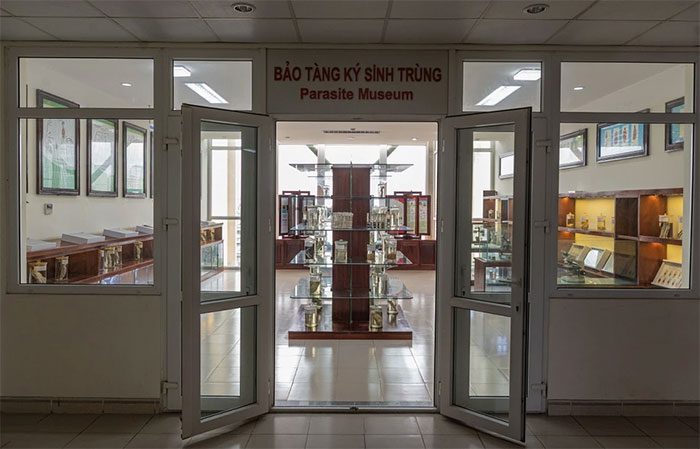
The Parasitology Museum is located on the 9th floor of the central building of the Central Institute of Malariology, Parasitology, and Entomology (Nam Tu Liem District, Hanoi). It displays 345 specimens, including types of roundworms, hookworms, tapeworms, and various intermediate hosts that transmit diseases, preserved in jars, tanks, and glass plates filled with formaldehyde.
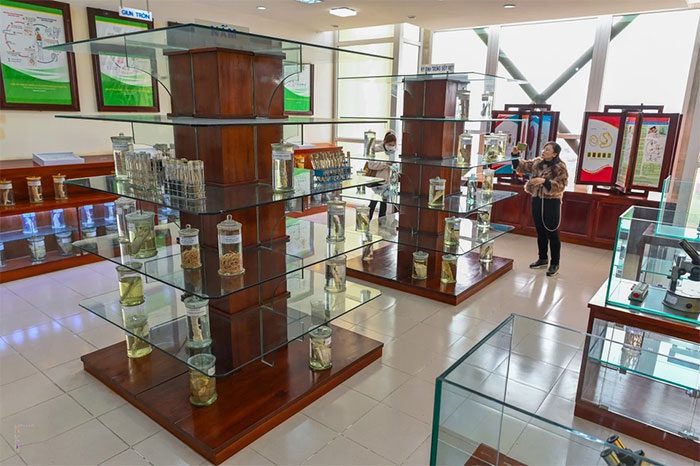
The museum’s concept was formed in 2010 and officially established in 2013. It introduces the diversity and life cycles of various dangerous parasites affecting humans and animals.
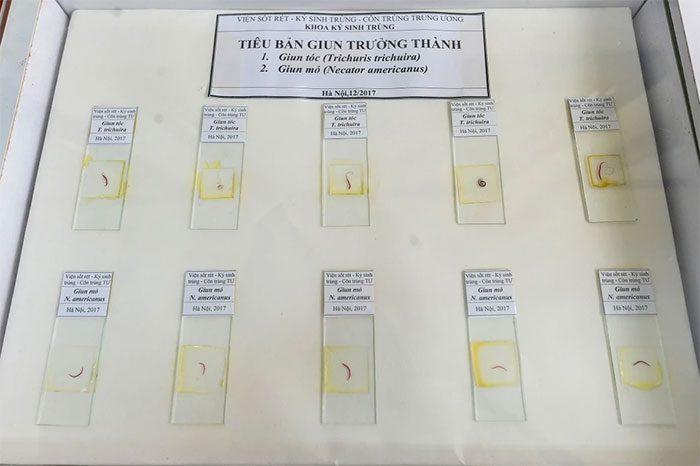
The specimens here are preserved according to strict procedures. For worms, they are dyed with carmine and mounted on dry specimen boxes, while mature tapeworms are mounted on glass slides and preserved in formaldehyde solution.
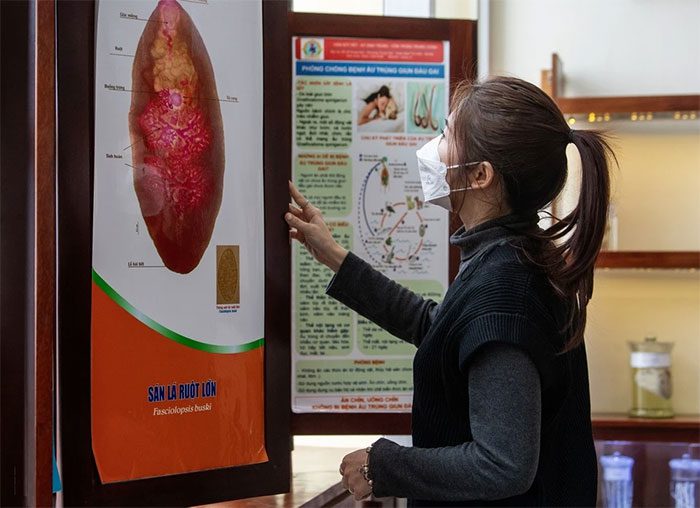
In addition to the parasitic specimens affecting humans, photographs demonstrating the harm caused by these parasites on the human body are also displayed.
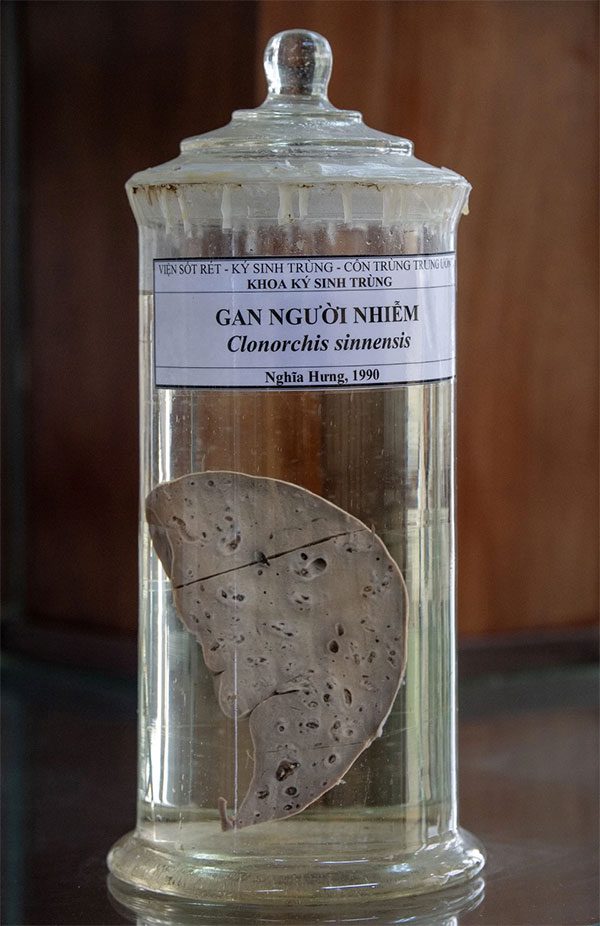
A specimen of a human liver infected with a tapeworm is preserved in formaldehyde and displayed in the museum. This specimen was collected in Nghia Hung District (Ha Nam Ninh Province, now Nam Dinh Province) in 1990.
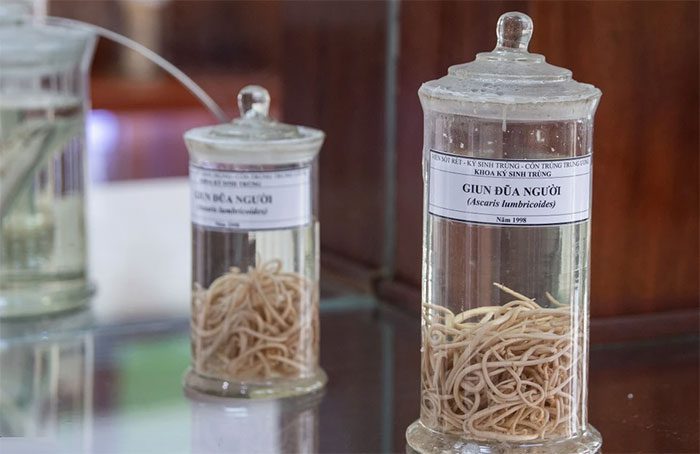
A mass of human roundworms numbering in the hundreds was discovered and collected in 1998.
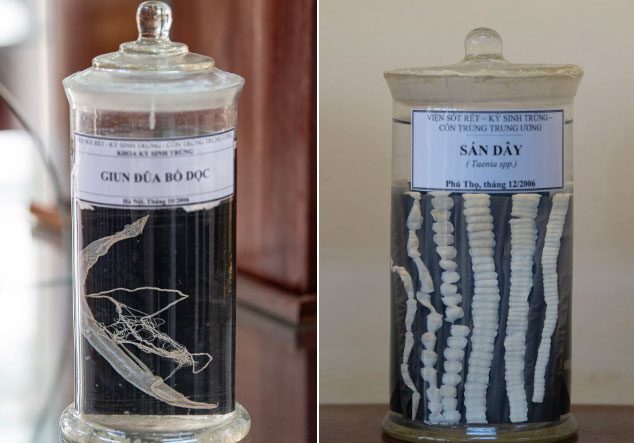
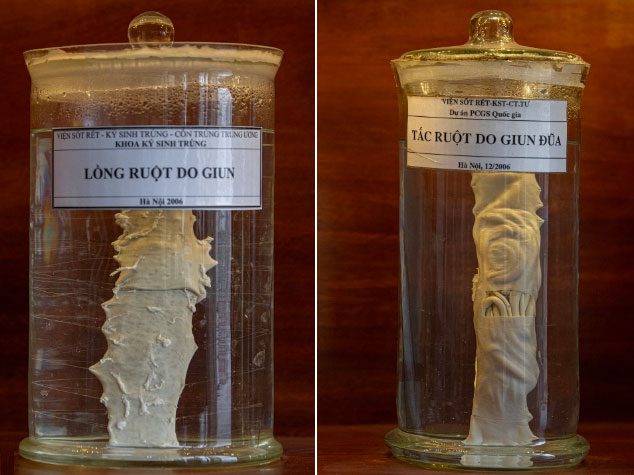
Specimens of roundworms and tapeworms, along with their harmful effects on human health, have been collected and displayed in the museum.
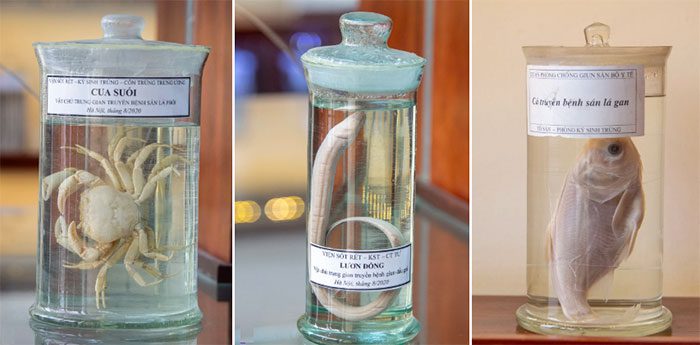
Intermediate hosts that transmit worms and tapeworms to humans, such as freshwater crabs, eels, and fish, have also been collected, processed, preserved, and displayed by the expert team at the museum.
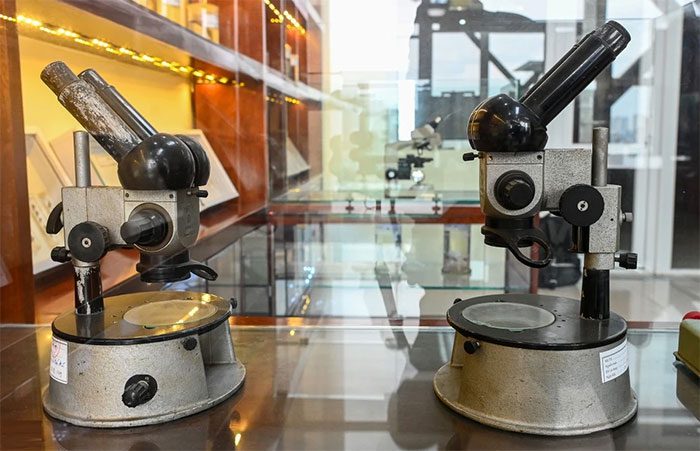
The museum houses several microscopes manufactured in the Soviet Union that are decades old. They have contributed significantly to the research and education of thousands of doctors at the Central Institute of Malariology, Parasitology, and Entomology over the years.
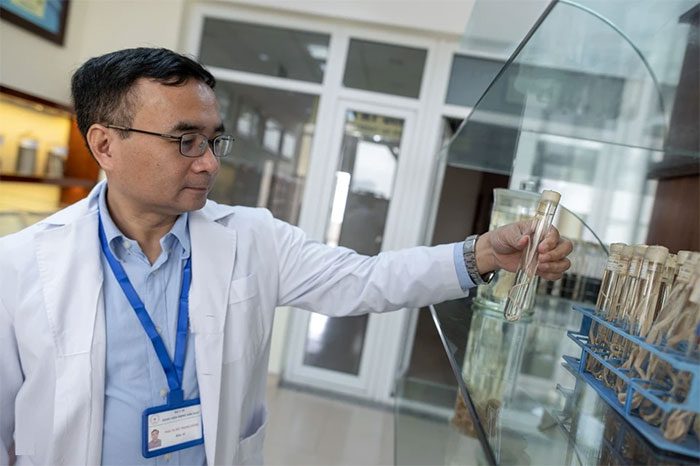
According to Associate Professor Dr. Do Trung Dung, Head of the Parasitology Department at the Central Institute of Malariology, Parasitology, and Entomology, the museum is not only a repository of specimens but also a reputable address serving the educational and research purposes of many generations of medical students, researchers, and doctors both domestically and internationally.
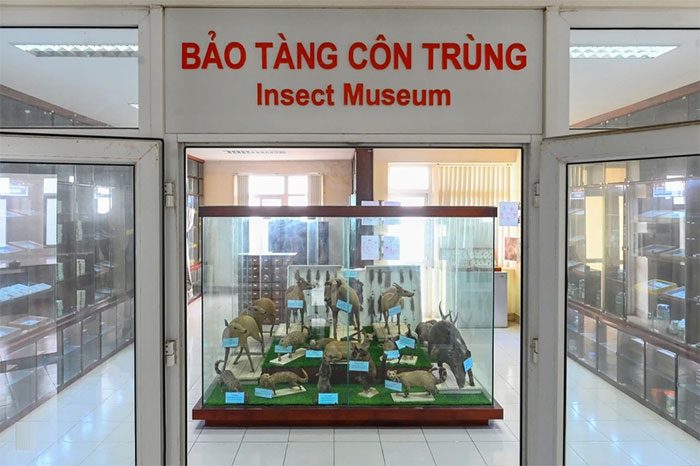
On the 9th floor of this building, there is also the Insect Museum. The museum was established in 1957 when the Central Institute of Malariology, Parasitology, and Entomology was founded, initially called the Specimen Preservation Room.
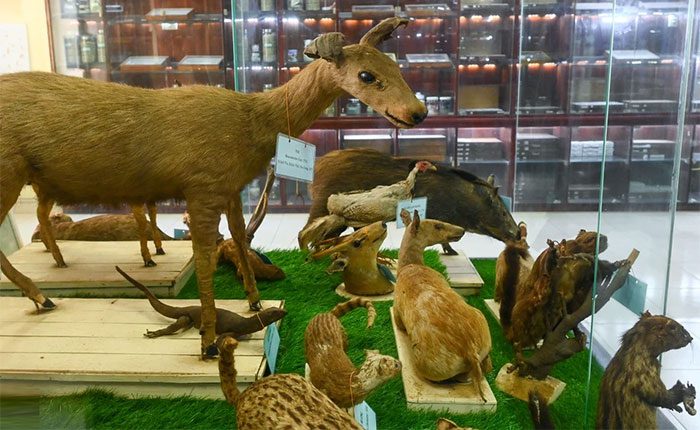
By 2003, it was upgraded and renamed the Insect Museum. With thousands of specimens stored and displayed, including many type specimens.
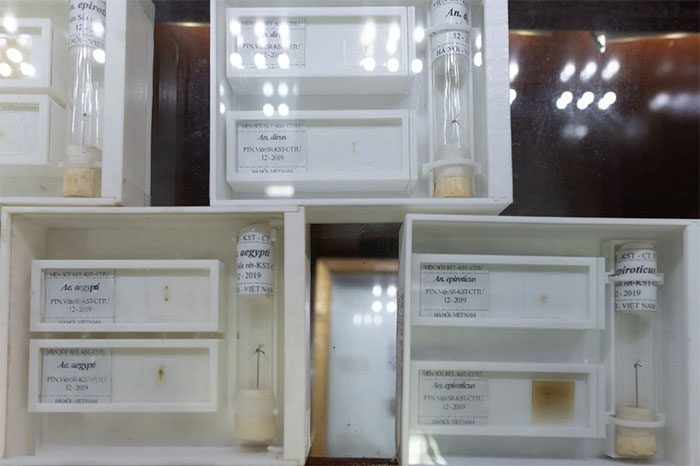
The Insect Museum has provided specimens and performed specimen comparisons for research in the field of medical science, especially studies related to taxonomy and entomology, resources, and biodiversity concerning medical insects and ectoparasitic insects.
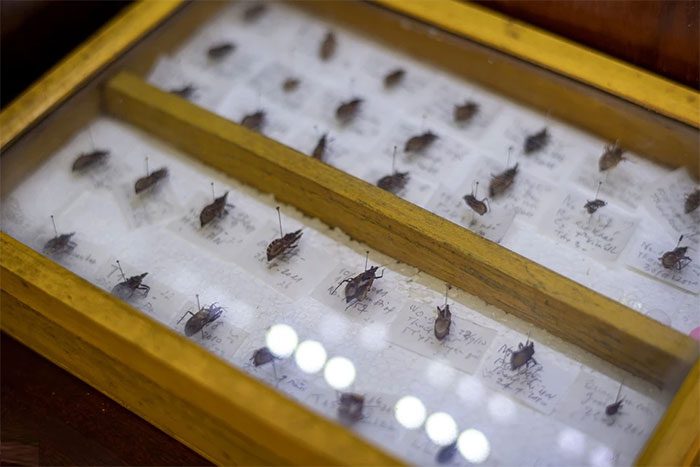
Specimens of hosts and insect specimens are divided into four main groups… Group 1: Ectoparasitic hosts – mice, deer, and other hosts for ectoparasitic insects. Group 2: Diptera: Anopheles mosquitoes (malaria vector), Aedes mosquitoes (dengue vector), and Culex mosquitoes (Japanese encephalitis vector). Group 3: Ectoparasitic insects: fleas (plague), ticks (tick fever, Rickettsial diseases), mites (scrub typhus), and lice (Rickettsial diseases). Group 4: Other species: flies, three-segmented ants, blood-sucking bugs, scale insects, hard-winged insects, and lice.
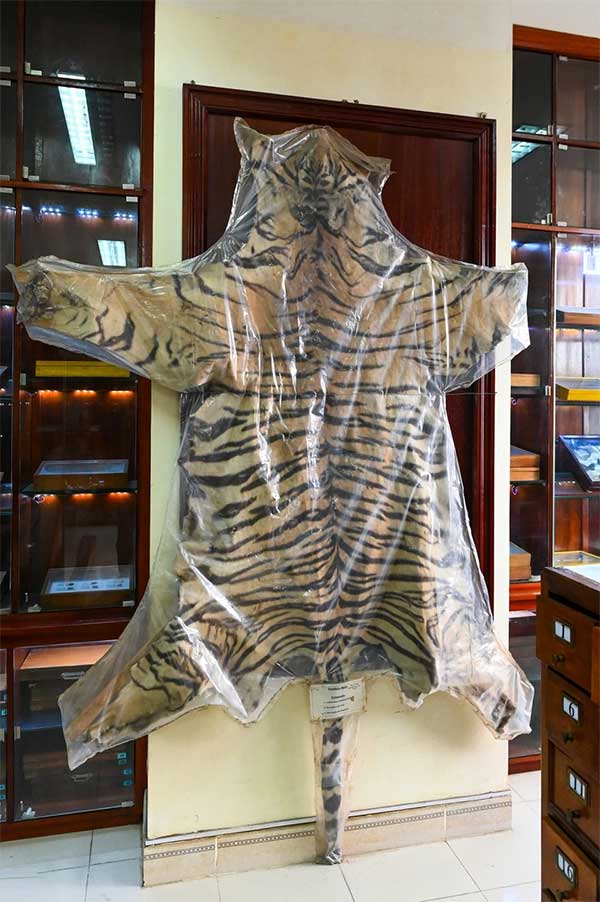
A complete and rare tiger skin is displayed in the museum courtyard. This specimen was collected on May 2, 1981, in Dong Phu, Dong Xoai (Song Be Province, now Binh Phuoc Province).

According to Dr. Nguyen Van Dung, Head of the Entomology Department at the Central Institute of Malariology, Parasitology, and Entomology: “In Vietnam, there are some agencies that preserve specimens for research and teaching, such as the Veterinary Institute, Hanoi University of Agriculture I, and several other universities. However, only the Insect Museum at the Central Institute of Malariology, Parasitology, and Entomology has a museum room dedicated to preserving medical arthropod specimens with such quantity and variety.”

















































